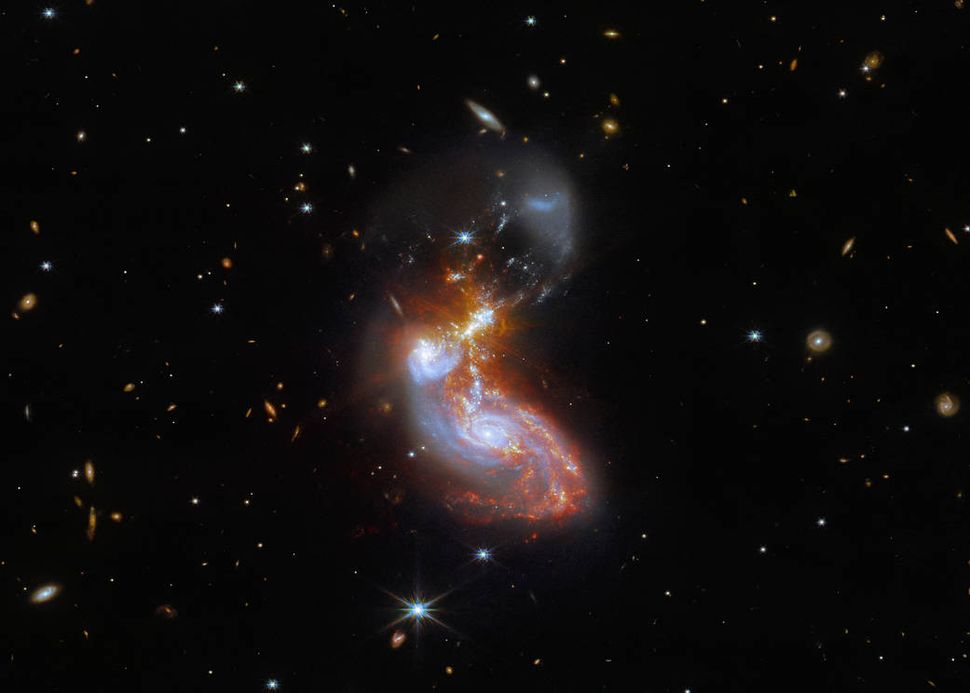
A great assembly of galaxies has been captured by the James Webb Space Telescope as two galaxies distort each other as they merge.
II ZW 96 is the name of the ongoing cosmic collision that Webb photographed. According to a statement released by NASA on November 30 (opens in new tab), it is in the constellation Delphinus and is approximately 500 million light-years away from Earth.
Webb used its cutting-edge NIRCam (Near-Infrared Camera) and MIRI (Mid-Infrared Instrument) payloads on II ZW 96 to create the image, which shows how the gravitational attraction of the two galaxies is bending their shapes.
The bright cores of both galaxies are connected by the very bright tendrils of star-forming regions that made II ZW 96 such a tempting target for Webb, as NASA scientists note that the spiral arms of the lower galaxy have been twisted out of shape.
Webb's observation is part of a larger project to investigate the evolution of galaxies, with a particular focus on nearby "Luminous Infrared Galaxies." According to NASA, these galaxies, one of which is II ZW 96, are particularly bright at infrared wavelengths, with luminosities that are more than 100 billion times greater than those of the sun.
Astronomers are familiar with the merging galaxy system II ZW 96, which has previously been observed by ground-based telescopes and the Hubble Space Telescope (opens in a new tab).

0 Comments